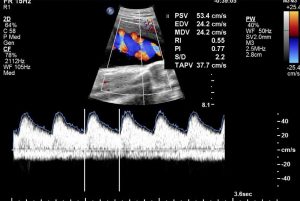
Course Overview:
This course offers an in-depth analysis of the diagnosis and management of Multi-Vessel Doppler Studies in Intra-Uterine Growth Restriction (IUGR), with a focus on understanding its complexities and implications. It delves into the methods of identifying small-for-gestational age fetuses and differentiating between physiological and pathological smallness. The course extensively covers the use of Doppler studies, particularly umbilical artery and middle cerebral artery assessments, in the management of IUGR. Key topics include the interpretation of Doppler waveforms, the significance of umbilical vein pulsations, and the timing of delivery based on Doppler findings. This course is crucial for healthcare professionals involved in perinatal care and fetal monitoring. Enroll now, or continue to read more about this course.
Key Features of Multi-Vessel Doppler Studies in IUGR Course:
- Learn the nuances of umbilical artery and middle cerebral artery Doppler assessments.
- Explore how to distinguish between ‘physiologically small’ and ‘pathologically small’ fetuses.
- Describe the perinatal mortality and morbidity associated with IUGR and the appropriate management.
Earn ACCME Category 1 PRA Credit:
Course Benefits:
- Learn to apply this knowledge in clinical settings, improving patient counseling and management strategies.
- Earn 1 AMA PRA Category 1 ™ credits.
- Professional Development
Who Should Enroll:
Course Duration:
Enroll Now:
Join our comprehensive course on Intrauterine Growth Restriction (IUGR) to enhance your knowledge and expertise in fetal medicine. Enroll now to gain valuable insights into the management of IUGR and improve outcomes for both mothers and babies.
